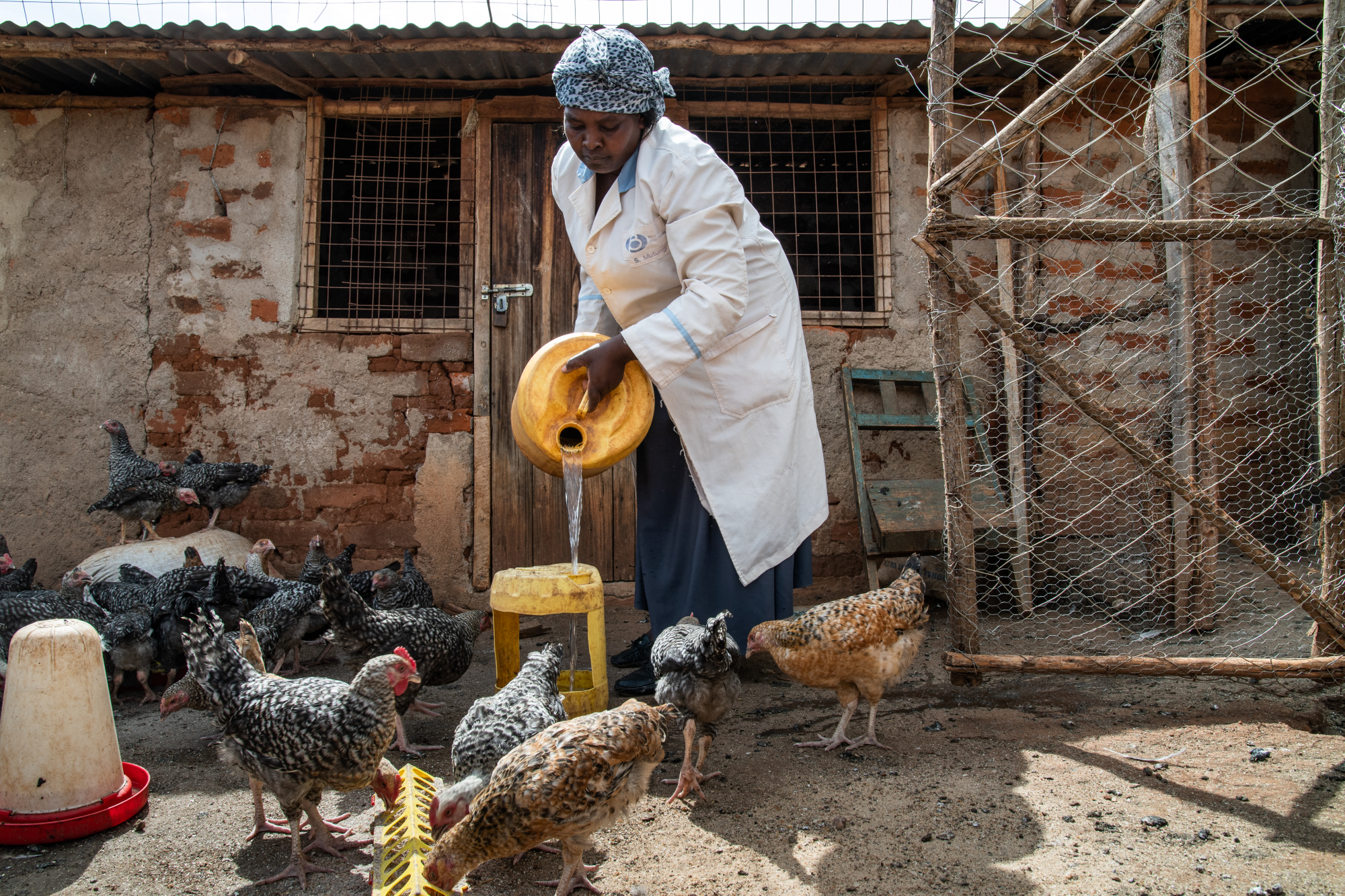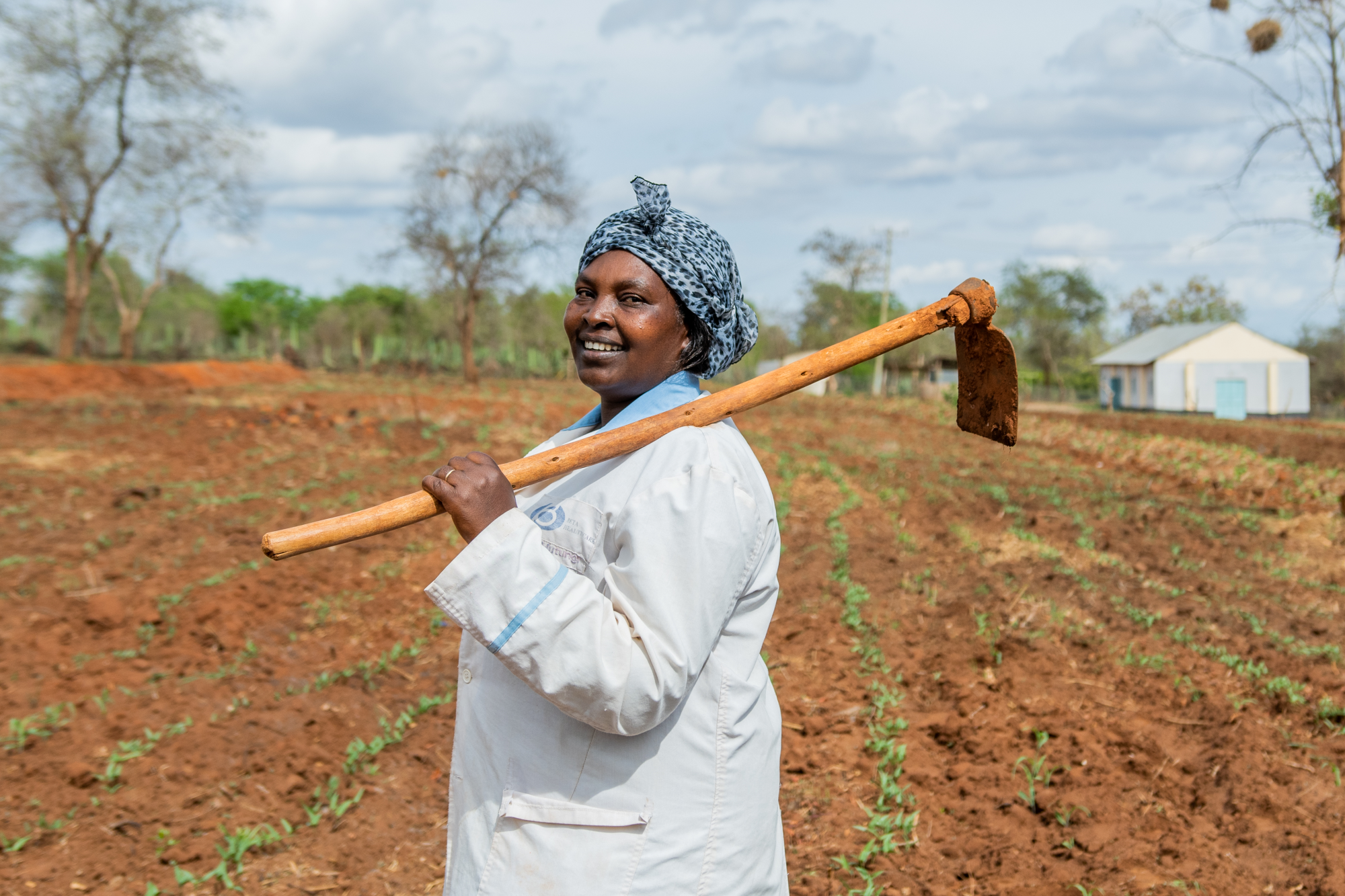Imagine the toil, time, and care it takes to raise healthy livestock like chickens and goats, grow nutritious food for your children, and sell some surplus to your local community. Now imagine having to do this with the threat of extreme heat, drought, and pests as well.
This is the life on many smallholder farms in sub-Saharan Africa and South Asia, where women make up well over 50% of the agricultural labor force. Climate change is intensifying far faster in Africa than anywhere in the world, and farmers are being hit the hardest, even though they contributed the least to the emissions causing climate change.
It can be hard for people in places like the United States to understand how important this is. Less than two percent of Americans work in agriculture, whereas more than half of Africans and up to 90 percent of people in rural areas work in agriculture. So while Americans tend to think about this industry as something that feeds their families, for Africans, agriculture supports their families.
To learn more about how small-scale farms in sub-Saharan Africa can adapt to climate change, I spoke with Enock Chikava, director of Agricultural Delivery Systems at the Bill & Melinda Gates Foundation. Raised on a smallholder farm in Zimbabwe, he has spent three decades working to ensure farmers across the continent have the technology they need to boost productivity and secure their livelihoods.

Enock shared some of the exciting innovations his team is supporting.
Much of the global crop research has focused on products like wheat that are grown and eaten in Europe or North America. African scientists are working on crops that are widely consumed on the African continent, such as maize, cassava, and cowpea. Improved crop varieties can better tolerate heat, drought, flood, and withstand disease and produce higher yields. Many of these high-quality seeds have been tried and tested by farmers who have seen a direct impact in just one season.
Livestock are another important way to boost both the nutrition and livelihoods of farmers. Tropical village chickens, for example, are already adaptable and climate resilient, but not very productive. Without genetic improvement, one village chicken will supply around 40 eggs in a 14–18-month period. But if these chicks are crossed with superior lines, are given high-quality feed, and are vaccinated in the first forty-five days, they can produce 100-200 eggs and gain double the weight in half the time. What a difference!

Understanding soil health is another way farmers can better plan. Rather than spending a lot of money collecting and sending multiple soil samples to a lab, they can use innovations like digital soil mapping, satellite imagery, and machine learning to help them make informed decisions about which crop is most suitable, determine more appropriate fertilizers, and reduce soil erosion. Digital tools are also helping farmers access technical advice and market information and provide early warning systems to help them anticipate and navigate climate threats.
The key now is to get these climate-smart innovations into the hands of more farmers and to reach more communities, and that’s where philanthropy can come in. “Each year, we are advancing new innovations and have a complete package for each one of them,” says Enock. “If you want to invest in scaling these up, we have the tools and resources to help you do so.”
This work will spark nothing short of a transformation in food systems. When small-scale farmers have the tools they need to take care of their families, it will help reduce poverty and malnutrition, contribute to solving the global climate emergency, and create better economic opportunities for rural communities, especially women.
To learn more about ways you can help these proven innovations reach more farming families, reach out to us at [email protected].


